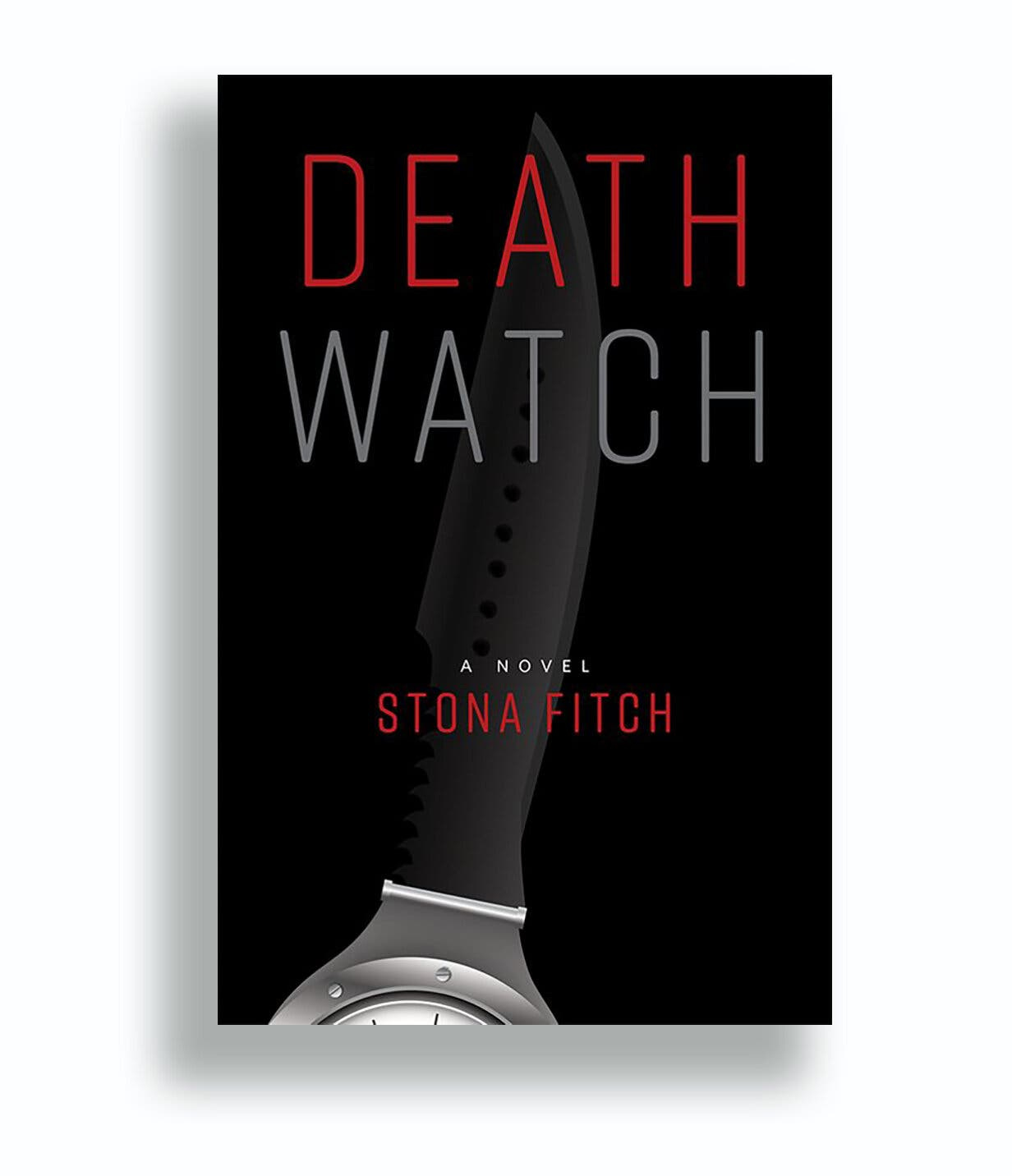It is certainly possible to get fed up with any hobby from time to time, and sometimes, of course, you get fed up because you realize that your hobby is not the diversion from the wear and tear of daily life it was supposed to be. Instead, the scales fall from your eyes and you realize that what you have done is essentially built a monument to your own capacity for self-deception, which is not what you had in mind. In short you become possessed by your possesions, rather than possessing them (Bruce Chatwin’s Utz ought to be required reading for anyone considering collecting anything, whether it’s street car transfers or watches). Of course the real tragedy is to have given love to what seemed at first to be a low risk target for affection – a Patek has never cheated on anyone except in the most trivial possible sense – only to find out that in trying to love safely you have failed at both love, and safety.
There are a lot of ways to read Death Watch, by Stona Fitch, which is a quick, sharp read in more ways than one. The premise of the book is both straightforward and ingenious.
A Japanese conceptual artist named Watanabe, who seems to be interested in underscoring the amorality and absurdity of life by behaving amorally and absurdly, has come up with a watch called Cassius Seven, named I think for Cassius’ seven co-conspirators, which, he says when presenting the watch to the global art press, has a complication never before seen in the history of watchmaking.
He’s got that right. The watch looks more or less like an ordinary wristwatch but, at some point, it is designed to kill its owner, thanks to tiny blades concealed in the caseback which when activated, sever the ulnar artery. An ad agency representative at the presentation, one Coe Vessel, decides to strap one on to kick start the ad campaign after being reassured that the whole thing is a complicated hoax intended to expose how deeply futile life has become, but then, it turns out that the watch – renamed Death Watch by Coe’s ad agency, Moriawase (the founders chose the name at random from the menu of a Japanese takeout joint they frequent; it means “combination platter”) actually works as advertised. And here’s the kicker – try to take it off, and you’ve signed your own death warrant; any attempt to remove the watch will activate the blades and you die like Frankie Five Angels in The Godfather Part II.
People start to die, slowly in first and then in greater and greater numbers, and the deaths don’t seem to slow down sales – instead, the fact that the threat of imminent death is real only spurs more and more people to sign on for a wrist-wearable Sword of Damocles.
For watch enthusiasts, there is a lot to chew on, including a not very flattering portrait of – well just about everything and everyone involved. The novel is a satire on, in no particular order, the advertising world, the art world, the luxury world, the luxury watch world, getting canceled online, BDSM, and the deep and ineradicable capacity for people to kid themselves, with some deep cuts, hahaha, about performative nihilism (performative anything actually) as well.
For one thing, the Death Watch is ridiculously expensive, at $50,000 – apparently only rich nihilists need apply. For another, it becomes a hype watch – having one means that not only are you an au courant member of an elite global community of people with fifty grand to burn on a watch, you are part of another community that it overlaps – of people who find that a risk of real death with a big price tag attached just makes the risk more attractive, which post-Titan seems prescient. And then, of course, naturally (Fitch has done some writing for the watch industry and seems to know the landscape pretty well) there is a brisk market in fakes, which springs up almost as quickly as the rapidly expanding audience for the real thing.
The real point, though, is that the logical, reductio ad absurdum of Veblen goods, is to make life itself a Veblen good and at least the people who buy the Death Watch aren’t outsourcing mortality. There is a fine cast of characters, including an agency partner who refuses to communicate except by text message, and an ending which is at first shocking but which seen against the trajectory of the plot, makes a certain kind of perverse sense.
The Death Watch may require a bit of suspension of disbelief – for one thing, it has an apparently unlimited power reserve and being able to drill through flesh and bone successfully would require quite a bit of juice (there’s a remontoire joke in here somewhere). And the descriptions of the watch are both highly specific and mystifyingly vague – you never quite know what it looks like, in keeping with the old adage that you never show the whole monster. The cover art for the book looks an awful lot like an Hublot but I’m sure that is mere happenstance.
I don’t think that Death Watch was particularly written with watch enthusiasts in mind but it didn’t have to be – watches, which used to be a charmingly idiosyncratic little hobby, have become such an ingrained part of the modern luxury landscape that even someone who hasn’t heard of any watch brand other than Rolex will understand the book’s drift immediately. The idea that a mundane object like a watch could kill you is absurd, but maybe no more ridiculous than having paid fifty thousand of your favorite dollars for it in the first place.



